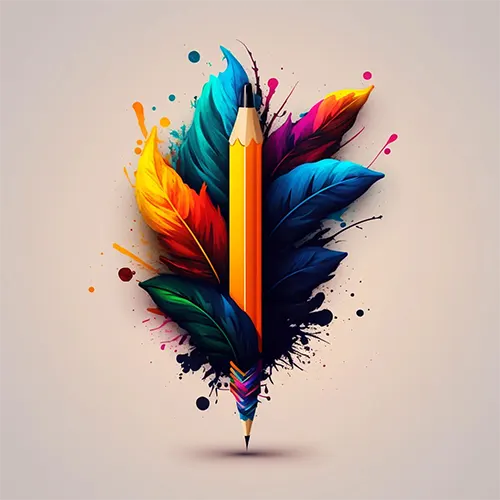
Anatomy of Type
Table of Contents
- Introduction
- What Is Typography?
- Components of Type Anatomy
- Baseline
- X-height
- Ascender and Descender
- Serif and Sans Serif
- Counter
- Ligature
- Kerning, Leading, and Tracking
Introduction
Typography plays a vital role in graphic design, influencing how audiences perceive and interact with content. Whether creating logos, brochures, or websites, understanding the anatomy of type is essential for crafting visually appealing and effective designs. If you're passionate about learning these skills, enrolling in a Graphic Designing Training in Chandigarh can be your first step toward mastering this art. Let’s dive into the fascinating world of type anatomy.
What Is Typography?
Typography is the art and technique of arranging type to make written language legible, readable, and visually appealing. It combines creativity with functionality, shaping how text communicates with the audience. Every letter you type or design has intricate parts that contribute to its overall structure and style.
Components of Type Anatomy
Typography has a unique language to describe the elements that make up each character. Understanding these components helps graphic designers create balanced and harmonious designs.
1. Baseline
The baseline is the invisible line on which most letters sit. It serves as a reference point for aligning text consistently in a design. For example, letters like "a," "b," and "c" rest neatly on the baseline, providing uniformity.
2. X-height
The x-height measures the height of lowercase letters, excluding ascenders and descenders. It affects readability, especially for long passages of text. Designers often use x-height as a guide when pairing fonts.
3. Ascender and Descender
- Ascender: The part of a letter that extends above the x-height, such as in "b" and "h."
- Descender: The portion of a letter that extends below the baseline, as seen in "g" and "y."
These elements add character and variation to typefaces.
4. Serif and Sans Serif
- Serif: Small decorative strokes added to the ends of letters, common in traditional fonts like Times New Roman.
- Sans Serif: Fonts without decorative strokes, offering a cleaner and modern look, like Arial.
Choosing between serif and sans serif impacts the tone of your design.
5. Counter
The counter is the enclosed or partially enclosed space within letters, such as the space inside "o" or "e." Counters influence a font's legibility and openness.
6. Ligature
Ligatures are special character combinations created when two or more letters are joined to enhance readability or aesthetics, such as "fi" or "fl."
7. Kerning, Leading, and Tracking
- Kerning: Adjusting the space between individual characters.
- Leading: The vertical space between lines of text.
- Tracking: Modifying the spacing across a group of characters.
These factors help in organizing text effectively for various design contexts.
Importance of Understanding Type Anatomy in Graphic Design
Knowing the anatomy of type enables graphic designers to choose and customize typefaces that align with the project's goals. It allows designers to create a cohesive visual identity, improve readability, and evoke specific emotions in the audience. For instance, a clean sans-serif font might work best for tech startups, while an elegant serif font might suit luxury brands.
Learning about these elements is a cornerstone of professional design education. Students enrolled in programs like a Graphic Designing Course in Chandigarh gain in-depth knowledge of typography and other essential design skills.
Conclusion
Typography is more than just arranging letters on a page; it’s about crafting an experience that resonates with the audience. Understanding the anatomy of type empowers designers to make informed choices, resulting in designs that communicate effectively. If you're ready to explore the world of graphic design, consider enrolling in a Graphic Designing Course in Chandigarh to enhance your skills and create impactful designs.
FAQs
1. Why is understanding type anatomy important for graphic designers?
Type anatomy helps designers create visually balanced and professional designs, improving readability and conveying the intended message effectively.
2. What is the difference between serif and sans-serif fonts?
Serif fonts include decorative strokes at the ends of letters, making them more traditional, while sans-serif fonts lack these strokes, offering a cleaner and modern appearance.
3. Can I learn typography through a graphic design course?
Yes, a comprehensive graphic design course covers typography extensively, including its principles, anatomy, and practical applications.
4. Where can I enroll in a graphic design course in Chandigarh?
Many reputed institutes offer Graphic Designing Courses in Chandigarh, providing hands-on training in typography, design principles, and software tools.
5. How do I choose the right font for my design?
Consider the design's purpose, audience, and tone. Experiment with serif and sans-serif options while ensuring readability and alignment with the overall concept.



